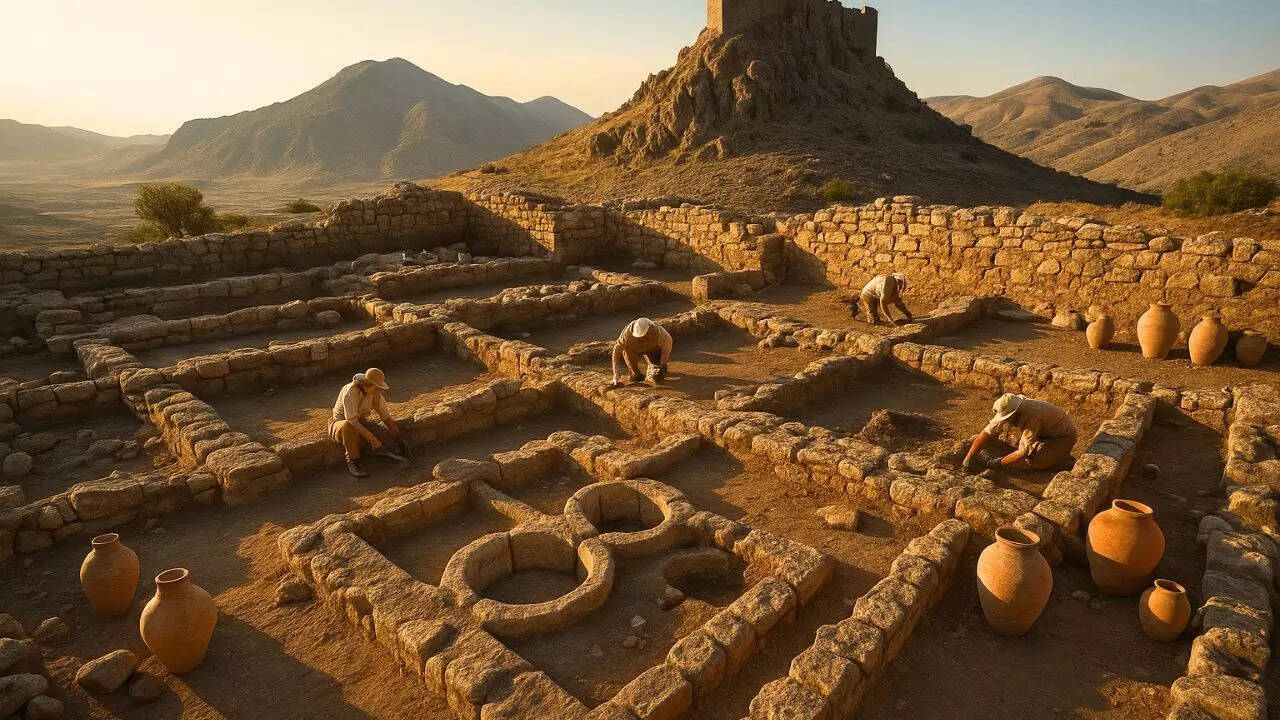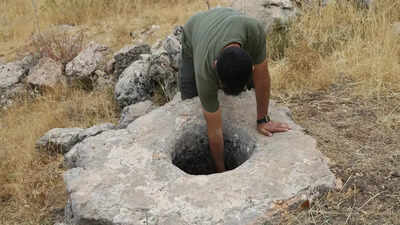Archaeologists in Turkey have unearthed a remarkably preserved 1,600-year-old Roman wine production site beneath the ruins of an ancient mountain castle. The discovery, made near the village of Oymakli in southeastern Turkey’s Kahta district, sheds light on the scale and sophistication of winemaking in the late Roman period. The site includes grape-crushing installations, cisterns, and grinding stones, all remarkably intact after more than a millennium. Experts believe the complex once operated as a large-scale industrial winery, serving both local residents and the nearby Kahta Castle, an important stronghold during the Kingdom of Commagene.
Unearthing the ancient vineyard
The excavation, led by the Turkish Ministry of Culture and Tourism, began after archaeologists discovered fragments of stone and pottery believed to be of historical value. The site spans nearly 37 acres and lies in a mountainous region overlooking the Euphrates River valley.Researchers found several installations used to crush grapes and channel juice into cisterns for fermentation and storage. Grinding stones and remnants of clay vessels suggest the factory also produced flour and possibly olive oil, hinting at a wider agricultural economy.According to Mehmet Alkan, provincial museum director, the site’s foundations survived “remarkably well” despite being built from irregular stones. “Its preservation offers an exceptional look into ancient craftsmanship and industrial-scale production,” he said.

Representative AI image
A castle’s hidden companion
The ancient wineworks lie close to Kahta Castle, a fortress originally built in the 2nd century BC for the Kingdom of Commagene, a Greco-Iranian dynasty that thrived before Roman annexation. Archaeologists believe the site may have once served both as a production hub and as a residential settlement for those who worked at or supplied the castle.Given the castle’s position on a major trade route between Mesopotamia and Anatolia, experts say the winery could have played a key role in provisioning the garrison and exporting wine across the region. The discovery provides rare evidence of how local economies functioned under Roman rule in Anatolia’s remote mountain regions.
From grape to glass: how the Romans made wine
The structures uncovered mirror other Roman-era wineries found across the Mediterranean. Grapes were likely pressed manually or with wooden beams, allowing juice to flow through carved channels into stone basins. From there, it would have been stored in large clay jars, or amphorae, to ferment.Archaeologists also uncovered cisterns carved directly into rock, which would have stored water essential for both winemaking and daily life in this dry region. The presence of such facilities suggests that the complex operated at an industrial scale, far beyond the needs of a single household.
A glimpse into late Roman life
Dating to the 4th century AD, the site falls within a period when Christianity was spreading through the Roman Empire and Constantinople was emerging as its new capital. The discovery shows that even in remote provinces, life thrived through trade, agriculture, and craftsmanship.The blend of Roman engineering and local traditions in the architecture highlights the cultural fusion that defined this era. “This settlement reflects both Roman influence and Anatolian adaptation,” researchers noted in their preliminary report. Go to Source




